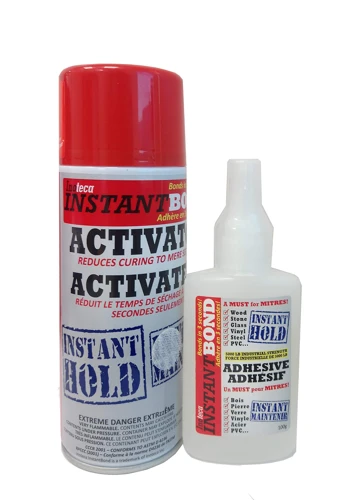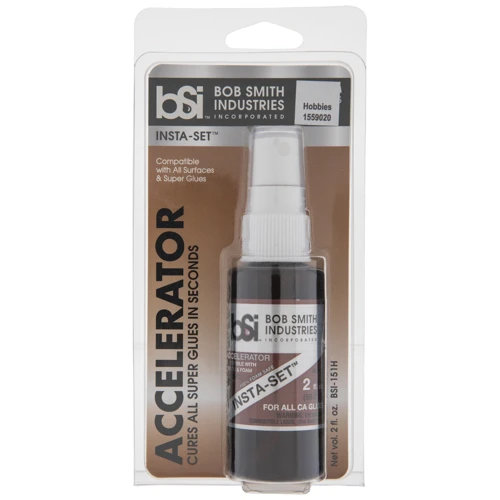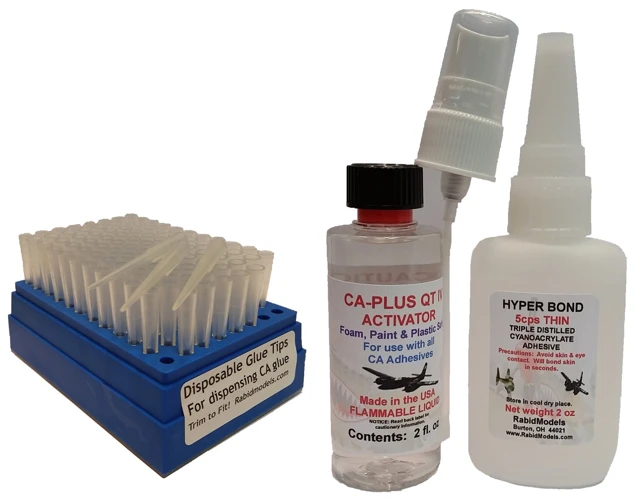When it comes to quick fixes and powerful bonds, the combination of ca glue and activator stands out in the world of adhesives. This duo is renowned for its rapid curing time and formidable strength, making it a go-to solution for hobbyists and professionals alike.
The Basics of CA Glue
Cyanoacrylate (CA) glue, commonly known as super glue, is an acrylic resin that cures almost instantly when exposed to moisture. Its fast-acting nature makes it ideal for a variety of tasks that require a quick and firm bond. Because of its properties, CA glue is widely used in numerous applications, from everyday household repairs to intricate model building.
What Is CA Glue Activator?
A CA glue activator, also known as a CA accelerator, is a catalyst that accelerates the curing process of cyanoacrylate glue. This activator is typically applied to the surface before or after the CA glue is applied. Once the activator comes into contact with the glue, it induces a rapid chemical reaction that causes the glue to harden almost instantly, reducing the bonding time from minutes to seconds.
The Role of CA Glue Activator in Adhesion
The interplay between CA glue and its activator is crucial for achieving optimal adhesion in a minimal amount of time. The activator’s role is to ensure that the glue’s curing process is not only hastened but also uniform, allowing for a stronger and more reliable bond.
How Does CA Glue Activator Work?
The activator is composed of chemicals that react with the CA glue, causing it to polymerize rapidly. This reaction generates heat and results in the glue transforming from a liquid to a solid state. The efficiency of the activator lies in its ability to trigger this process almost instantaneously, which is particularly useful when working with materials that are not inherently porous or lack moisture.
Will CA Glue Dry Without Activator?
While CA glue is designed to cure with ambient moisture, the question of whether will ca glue dry without activator is quite common. The answer is yes, it will eventually cure on its own. However, without the use of an activator, the curing time can be significantly longer, and the overall strength of the bond might be compromised, especially in less-than-ideal conditions.
Applications of CA Glue and Activator
From minor home repairs to complex assembly lines, the applications of CA glue and its activator are impressively diverse. The versatility of this adhesive system makes it invaluable in many scenarios.
Cyanoacrylate Glue and Activator Spray for Various Surfaces
The cyanoacrylate glue and activator spray are particularly effective for bonding a wide range of materials including plastics, metals, wood, and even some types of rubber and leather. The activator spray makes it easy to apply an even coat to the bonding surface, ensuring a consistent cure and a strong bond.
Using Wood Glue Activator in Woodworking
In woodworking, a wood glue activator can be a game-changer. It not only reduces clamping time but also minimizes the risk of joint movement or wood warping as the glue sets. This results in more precise and durable woodwork, which is essential for both structural integrity and aesthetic appeal.
Choosing the Best CA Glue and Activator for Woodworking
Selecting the best ca glue and activator for woodworking projects is crucial for achieving professional results. The performance of your adhesive can have a profound impact on the longevity and appearance of your finished work.
Factors to Consider When Selecting CA Glue and Activator
- Viscosity: The thickness of the CA glue should be appropriate for the task at hand — thicker for gap filling, thinner for quick repairs.
- Curing time: Depending on the project, you may require a faster or slower setting time.
- Material compatibility: Ensure that the CA glue and activator are suited for the materials you’re working with.
- Strength: Look for products that offer the level of bond strength needed for your specific application.
Best Practices for Applying CA Glue and Activator in Woodworking Projects
To achieve the best results, it’s important to apply both the CA glue and the activator properly. Carefully clean and prepare the surfaces to be bonded. Apply the CA glue sparingly to one surface and the activator to the other before joining them together. Press firmly and hold for a few seconds to ensure a strong bond.
Maximizing the Effectiveness of CA Glue with Activator
For those seeking to fully harness the potential of this adhesive duo, understanding the subtleties of their application is key. A meticulous approach can significantly enhance the performance of CA glue when paired with its activator.
Tips for Proper Application of CA Glue and Activator
- Ensure surfaces are clean and dry before application.
- Apply the activator to one surface and allow it to dry slightly before applying the glue.
- Use only the necessary amount of CA glue to avoid excess overflow.
- Allow the bond to cure for a few seconds after joining the surfaces.
Troubleshooting Common Issues with CA Glue and Activator
Occasionally, users may encounter issues such as premature curing, weak bonds, or whitening of the glue. To address these, make sure the activator is not applied excessively, and that the surfaces are not contaminated with oil or other substances. Adjusting the amount of glue and activator or the order of application can often resolve these problems.
FAQs on CA Glue and Activator
Frequently asked questions about CA glue and activators can provide valuable insights for users looking to optimize their use of these products.
Can You Use CA Glue on All Materials?
While CA glue is versatile, it’s not suitable for every material. Some plastics and silicones can be resistant to cyanoacrylate adhesives. Always test a small area before committing to a full application.
What Are the Safety Precautions When Using CA Glue and Activator?
It’s important to work in a well-ventilated area, wear gloves to protect your skin, and keep the products away from your eyes and mouth. Always follow the manufacturer’s safety guidelines for the best practices.
Conclusion
Recap of CA Glue and Activator Benefits
The dynamic duo of ca glue and activator offers rapid curing times and robust adhesion, streamlining processes in multiple industries and applications. Their ease of use and effectiveness make them invaluable tools for quick repairs and strong bonds.
If you’re delving into the world of adhesives, you might be curious about the different types of glues and their specific uses. To learn more about the varieties of glue, check out our informative articles on decoupage glue and casein glue. For those interested in cyanoacrylate glues, our article on CA glue is a great resource, and to further understand the process of accelerating the bonding time, our piece on “What Is CA Glue Activator” can provide you with the answers you need.
Final Thoughts on CA Glue and Activator in Adhesive Technology
As adhesive technology continues to evolve, the synergy between CA glue and activators remains a testament to the ingenuity of modern chemistry. By understanding and utilizing these products correctly, one can achieve professional-grade results in a fraction of the time it would traditionally take.



